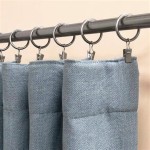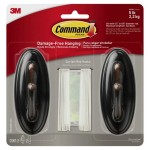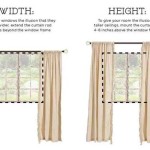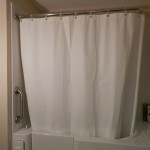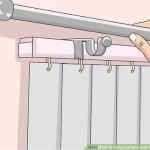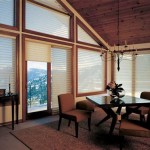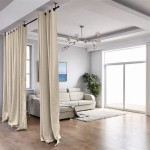Half Glass Shower Door Curtain: A Practical and Stylish Solution for Bathrooms
The half glass shower door curtain represents a hybrid approach to shower enclosures, blending the aesthetic appeal of glass with the flexibility and cost-effectiveness of a shower curtain. This configuration typically involves a stationary glass panel occupying the lower half of the shower enclosure, with a shower curtain suspended above, effectively creating a barrier against water splashes and drafts. The arrangement is increasingly popular in both residential and commercial bathroom designs, offering a balance between visual openness, ease of cleaning, and affordability.
This article will delve into the advantages of the half glass shower door curtain, explore the different design considerations, discuss installation nuances, and provide insights into maintenance practices. The objective is to provide a comprehensive understanding of this bathroom fixture, enabling informed decisions for homeowners and design professionals alike.
Advantages of the Half Glass Shower Door Curtain
The appeal of the half glass shower door curtain lies in its multifaceted benefits, offering a compelling alternative to both traditional shower curtains and fully enclosed glass shower doors. These advantages can be broadly categorized into aesthetics, functionality, and economics.
Aesthetics: The presence of a glass panel elevates the visual appeal of the shower enclosure. Glass contributes a sense of spaciousness and modernity, allowing more light to permeate the shower area. The transparent nature of glass minimizes visual obstruction, making the bathroom appear larger. Furthermore, the glass panel provides a backdrop for decorative shower curtains, allowing for easy customization and style changes. Users can readily switch out shower curtains to reflect seasonal changes, personal preferences, or evolving design trends, offering greater flexibility than fixed glass enclosures.
Functionality: The half glass panel effectively contains water within the shower area, preventing splashes from escaping onto the bathroom floor. This is particularly beneficial for bathrooms with limited space where excess water can pose safety hazards. The top curtain allows for ventilation, reducing humidity and minimizing the risk of mold and mildew growth. Unlike fully enclosed shower doors, which can trap steam and moisture, the shower curtain provides a breathable barrier. Additionally, the curtain is easily replaceable, allowing for quick and cost-effective renewal of the shower's appearance. Damaged or stained curtains can be readily swapped out without requiring specialized tools or professional assistance.
Economics: The half glass shower door curtain offers a cost-effective alternative to fully enclosed glass shower doors. The combination of a smaller glass panel and a shower curtain significantly reduces material and installation costs. Glass shower doors require specialized hardware, precise measurements, and professional installation, which can be considerably more expensive than installing a half glass panel and hanging a shower curtain. The option to change the curtain independently also offers long-term cost savings, as only the curtain needs to be replaced when it becomes worn or outdated. The installation process for a half glass panel is generally less complex, potentially reducing labor costs as well.
Design Considerations for Half Glass Shower Door Curtains
Effective integration of a half glass shower door curtain into a bathroom design requires careful consideration of various factors, including glass type, panel height, curtain material, and overall bathroom aesthetics. These factors influence the functionality, visual appeal, and long-term performance of the shower enclosure.
Glass Type and Treatment: The choice of glass for the panel significantly impacts the safety and maintenance of the enclosure. Tempered glass is highly recommended due to its increased strength and resistance to shattering. In the event of breakage, tempered glass disintegrates into small, relatively harmless pieces, reducing the risk of serious injury. Furthermore, glass coatings can be applied to minimize water spots and soap scum buildup, simplifying cleaning and maintenance. These coatings create a hydrophobic surface that repels water and reduces the adherence of contaminants. Opting for coated glass can significantly reduce the frequency and intensity of cleaning required to maintain the panel's clarity.
Panel Height and Placement: The height of the glass panel should be carefully determined based on the shower's dimensions and anticipated water spray patterns. A panel that is too low may not effectively contain water, while a panel that is too high may obstruct light and create a cramped feeling. The panel height needs to strike a balance between splash protection and visual openness. The placement of the panel should also be considered in relation to the showerhead and water flow. Positioning the panel to intercept the direct spray can further minimize water escaping the enclosure. The panel can be installed in various configurations, such as a single fixed panel, a hinged panel offering partial access, or a sliding panel that can be adjusted to control ventilation and privacy.
Curtain Material and Style: The selection of shower curtain material and style is crucial for both aesthetic and functional reasons. Common materials include polyester, vinyl, and fabric blends. Polyester curtains are durable, water-resistant, and easy to clean. Vinyl curtains offer a high degree of water resistance but may have a less appealing texture. Fabric blend curtains provide a softer, more luxurious feel but may require more frequent cleaning to prevent mildew. The style of the curtain should complement the overall bathroom design. Options include solid colors, patterns, textures, and decorative designs. The curtain's length should also be carefully chosen to ensure it hangs properly and effectively blocks water splashes.
Installation and Maintenance
Proper installation and regular maintenance are essential for ensuring the longevity and performance of a half glass shower door curtain. Incorrect installation can compromise the structural integrity of the glass panel and lead to water leakage, while inadequate maintenance can result in the buildup of soap scum, mildew, and other unsightly deposits.
Installation Process: The installation of a half glass shower door curtain typically involves mounting the glass panel to the wall and the bathtub or shower base. This requires precise measurements, proper drilling techniques, and the use of appropriate hardware. It is highly recommended that a professional installer be hired to ensure the glass panel is securely and safely installed. A professional installer possesses the expertise and tools necessary to accurately measure the space, properly anchor the panel, and seal any gaps to prevent water leakage. Following the manufacturer's instructions is crucial for proper installation. The shower curtain rod should be installed at the appropriate height, ensuring the curtain hangs properly and provides adequate coverage. Using a level during installation is essential to ensure the glass panel and curtain rod are plumb and aligned.
Cleaning and Maintenance: Regular cleaning is necessary to maintain the appearance and hygiene of the shower enclosure. The glass panel should be cleaned regularly with a glass cleaner or a solution of vinegar and water. A squeegee can be used to remove water droplets and prevent water spots. The shower curtain should be laundered or replaced periodically to prevent mildew growth. Regularly ventilating the bathroom after showering can also help to reduce humidity and minimize mildew formation. Inspecting the seals and caulking around the glass panel on a regular basis is also important. Any cracks or gaps should be promptly repaired to prevent water damage. Harsh chemicals or abrasive cleaners should be avoided, as they can damage the glass surface and the sealant.
Addressing Potential Issues: Potential issues that may arise with a half glass shower door curtain include water leakage, mildew growth, and damage to the glass panel. Water leakage can typically be addressed by ensuring proper sealing around the glass panel and the curtain rod. Mildew growth can be prevented by regular cleaning and ventilation. Damage to the glass panel, such as cracks or chips, should be addressed immediately to prevent further damage and potential injury. Replacing the glass panel may be necessary in cases of severe damage. Regularly checking the hardware holding the glass panel in place is important to make sure that it is secure. A loose setting can result in wobbling and potential damage to the glass over time.
In summary, the half glass shower door curtain presents a viable and versatile solution for bathroom enclosures, offering a blend of aesthetic appeal, functional advantages, and cost-effectiveness. By carefully considering the design elements, ensuring proper installation, and implementing a consistent maintenance regimen, homeowners and design professionals can harness the full potential of this hybrid shower enclosure.

1200 A Night Hotel Room This Is How They Installed The Glass Shower Door Half And 10 Curtain Keep It Classy 9gag

Might Still Hang A Shower Curtain Next Year Even If I Have Glass Sliding Door Because Colorful Diy Makeover Doors

Frameless Glass Shower Doors Vs Curtains Abc Mirror

Shower Panel With Rod Frameless Doors Panels

Shower Curtain Or Door

Half Wall Shower Glass Styles Pros And Cons Genius

Tile Shower With Curved Curtain And Half Wall Plus Ledge For Shampoo Instead Of Rec Small Bathroom Glass Door Curtains

Shower Door And Half Glass Wall Bathroom Ideas Pinterest Small Bathrooms Remodel

Full Half Wall Shower With Frameless Glass Doors Bathroom

Half Wall Shower Glass Styles Pros And Cons Genius

